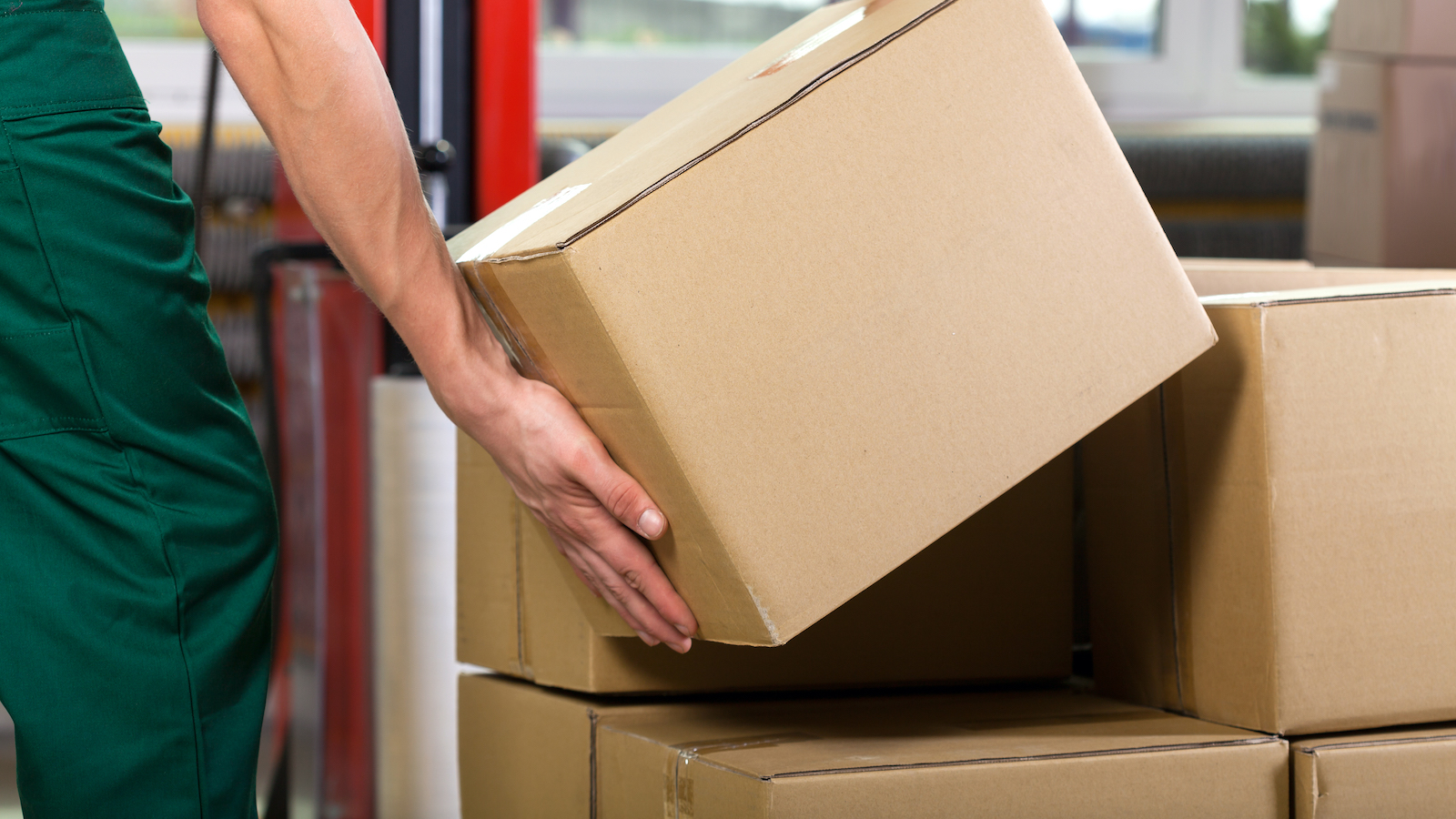Table of Contents
** Minutes
Why is logistics management important for your supply chain?
3 stages of logistics management you need to know
Logistics management best practices
Ordering, storing, and tracking inventory.
Processing orders.
Picking, packing, and shipping orders.
There is a lot that goes into logistics operations, and managing it all is a tremendous undertaking.
Logistics management is an ongoing process where you need to continuously optimise the supply chain to save on costs and meet customer expectations. Without proper logistics management, it can be hard to grow your business.
In this article, you will learn how the importance of logistics management, and the ways you can better manage your commerce supply chain.
What is logistics management?
Logistics management refers to the planning and managing of inbound and outbound logistics, as well as reverse logistics — the three major areas that make up the ecommerce supply chain.
Managing logistics involves:
- Ordering, receiving, and storing inventory across distribution centres
- Tracking inventory as it moves through the supply chain
- Implementing technology and automation
- Building warehouse picking and packing workflows
- Ensuring orders are shipped safely and on time
Why is logistics management important for your supply chain?
Logistics management refers to overseeing the entire ecommerce supply chain, starting with supplying finished goods to shipping orders to their final destination.
The goal of logistics management is to meet customer expectations around accurate and fast delivery while optimising internal costs.
If you’re ready to grow your ecommerce business, here are three reasons why logistics management is important.
1. Delivers products accurately
In today’s ultra-competitive ecommerce industry, most direct-to-consumer (DTC) brands seek to achieve as close to 100% order accuracy rate as possible. Though 100% isn’t always possible, a good accuracy rate falls between 96-98%. Any rate under 95% means there is room for improvement.
Logistics management requires setting accuracy goals, improving internal workflows, and finding ways to automate processes to optimise costs and reduce human error.
2. Keeps logistic costs low
Poor logistics management increases logistics costs, including storage and fulfilment costs, which can impact your bottom line.
Some of the ways to logistics management helps to keep logistics costs low include:
- Reducing sourcing costs by finding suppliers closer to your warehouse or store
- Keeping storage and purchase costs low by choosing to only stock products that are performing well
- Constantly optimising your logistics processes to keep up with any changes in the supply chain
- Reducing shipping costs by storing the items in locations where there is the most demand
- Outsourcing logistics to a 3PL to save money in the long run
With the right resources and technology, logistics management has the potential to provide insights into your operations, so you can identify areas of improvement to save on costs.
For instance, by tracking inventory in real time throughout the supply chain, you can collect historical logistics data needed to know when to reorder more inventory. That way, you have a better sense of how much inventory you need and when, which can help to avoid stockouts or overstocking, both of which increase costs.
3. Boost customer satisfaction
If an order is delivered with the wrong items, it ruins the unboxing experience. If a customer’s order is delayed, it impacts the shipping experience.
Logistics management plays a big role on customer expectations. The post-purchase journey relies on an efficient supply chain.
Without proper logistics management, it will not only be difficult to optimise operations and keep costs low, but it will also be a challenge to meet customer expectations around speed, accuracy, and affordability.
When managed right, ecommerce logistics can help you build customer loyalty and a positive brand reputation.
3 stages of logistics management you need to know
Though there are several steps that make up the entire supply chain, there are three major stages of logistics management that are the most important to focus on.
Here is an overview of the three major stages of logistics management.
Procurement
There won’t be any ecommerce inventory to sell if you don’t source it. The first step is sourcing and finding the right suppliers and manufacturers for finished goods. Quality and reliability, production lead times, and costs are all factors to consider during the procurement process.
Finding and signing on the right suppliers requires time, the ability to negotiate terms, and ensuring that the goods are of the quality you expect.
You will also have to keep track of how long it takes to receive inventory, so can make sure you have the right amount of inventory needed at all times.
After you sign on your supplier(s), here are points of evaluation to keep in mind:
- What are their key performance indicators and metrics?
- Are they meeting service-level agreements (SLAs)?
- Is the product quality up to your standards?
- Are they improving or at least consistent over time?
Storage
Once the goods are sourced from the supplier, inventory needs to be received and stored properly.
You have the option to store inventory at home (for in-house fulfilment), in a rented warehouse, or in a 3PL’s fulfilment centre(s). But no matter where you store your inventory, it needs to be stored in a way that optimises space and works with your fulfilment workflow.
The right inventory storage system can help you save on holdings costs, speed up your picking and packing process, and make inventory management much easier, especially if you need to conduct an inventory audit.
Order fulfilment
Fulfilment logistics is arguably one of the most critical pieces of the supply chain. It involves order processing, picking and packing workflows, and shipping.
During the order fulfilment process, you have to determine how you will fulfil your orders to meet customer expectations. Not only is speed a priority but so is order accuracy. You will also have to consider shipping costs and the different ecommerce shipping options you can offer customers.
Having the retail fulfilment infrastructure and technology in place can help you better manage logistics. For instance, automatically processing orders that are placed on your online store can help verify order information, including the shipping address, before it is sent to your fulfilment team to pick, pack, and ship.
Investing in automation tools and systems can be costly, but it doesn’t mean there isn’t a solution. If your business is at a stage when you can’t keep up with your current order volume, the best option is outsource fulfilment to third-party logistics company like ShipBob.
At this point, you might be thinking that outsourcing comes with a high costs. But in truth, you can delegate ecommerce fulfilment to a logistics partner, so you can focus on tasks that directly drive revenue. Since you won’t be focused on managing logistics, you can focus more time and money on growing your business.
“We see outsourcing fulfilment as a cost-savings and believe it will save you money in the long run. 3PLs negotiate rates, give you back all the time you’d spend stuffing mailers, and reduce the errors you’d make messing up addresses.
We looked into opening our own warehouses and hiring employees, but couldn’t come close with what 3PLs charge for picking, packing, and shipping.
We’d also be worried about scheduling fulfilment shifts, ordering boxes and shipping labels, and dealing with the extra headaches of running logistics.
Most of all, those are hours we’d spend on tasks that are not scaling our business when we could be using those resources for growth. You should spend time doing what you do best, and fulfilment is an easy task to take off your plate.
Plus, we really couldn’t do it ourselves. Our order volume has seen ebbs and flows, and ShipBob has fulfilled over 10,000 shipments per month for us, with Black Friday/Cyber Monday and our summer season being our most in demand times of the year.”
Gerard Ecker, Founder & CEO of Ocean & Co.
Logistics management best practices
Logistics management requires a lot of time and effort in supply chain planning. To help set you up for success and not get bogged down with the wrong tasks, below are the three primary best practices for logistics management in ecommerce.
Draw out a logistics management plan
Before you start implementing new logistics processes, it’s important that you line up your goals, KPIs, available resources, and the equipment and technology required to achieve these goals. Note: Make sure you integrate a lot of data-backed insights into optimising and planning your logistics.
Think about how you will get the right suppliers on board, the ones who are dependable, have high-quality products and materials, optimise inventory, meet delivery timelines, and are able to efficiently get product to you. Then, strategize how you will track and optimise inventory.
From there, you will need to find ways to improve fulfilment accuracy and speed, whether it’s through better and more efficient storage systems, or better picking and packing processes.
Another thing to keep in mind is the couriers in your network. Look at the different rates and services between USPS vs UPS vs FedEx, for instance. The right mix of couriers based on the type of shipping options you offer can help save costs.
Also, keep in mind that there are plenty of regional parcel couriers that specialize in local last-mile delivery. You might need the minimum volume to work with them, otherwise you can outsource fulfilment and utilise the fulfilment company’s bulk rates and economies of scale.
Location is also important. Many businesses start out by only shipping from one location (e.g., their home). But as your business grows, your customer reach will expand geographically. That’s the nature (and benefit) of ecommerce.
To reduce shipping costs and speed up transit times, you might want to consider splitting inventory across multiple locations to reduce shipping zones.
“We sell flammable goods that need to be shipped via ground, so ShipBob has been a great ally as they have fulfilment centres all over the US, facilitating a 2-3 day delivery time for any customer in the US.
This is helpful especially when weather challenges happen; being able to have different locations to ship from allows for a more seamless supply chain.”
Andrea Lisbona, Founder & CEO of Touchland
Implement supply chain automation
Logistics and inventory automation can make your supply chain more efficient every step of the way, from order processing to automated shipping.
For instance, repetitive warehousing operations can be made less arduous by harnessing warehouse automation technology. Think goods-to-person (GTP), pick-to-light (PLT), and voice picking systems. This frees up your staff’s time to focus on growing your sales.
With ShipBob’s automated fulfilment functionality, as soon as your customer places an order, it is automatically sent to one of our fulfilment centres and shipped from there to the customer.
“My favorite aspect of ShipBob is how easy it is. The software is pretty intuitive, and everything is where you think it would be. The ease of access and automation has helped us sell on our store.”
Josh Hollings, Founder & CEO of Drop FX
Use a warehouse management system
Implementing a warehouse management system (WMS) helps give you access to real-time data in a digestible format. A WMS streamlines logistics and provides full visibility into your entire supply chain, even as you expand into multiple warehouse locations to provide consistency throughout your logistics network.
To have absolute control over warehouse management, you will need to find a way to connect your warehouse(s) with other tools such as inventory management software, an ERP inventory system, or inventory app. That way, you can aggregate data related to inventory forecasting, SKU velocity, inventory days on hand, and much more.
If you outsource fulfilment, you can utilise a 3PL like ShipBob that provides all of these things to brands out of the box.
“ShipBob’s dashboard is super intuitive and easy to navigate. love that you can view orders based on when they are processing, completed, on hold, and in other stages. It is super helpful for us to have that and track the order every step of the way.
In terms of tracking inventory, we use ShipBob for everything — to be able to track each bottle of perfume, what we have left, and what we’ve shipped, while getting a lot more information on each order.”
Ines Guien, Vice President of Operations at Dossier
Continual supply chain optimisation
Supply chain optimisation can never be a one-off activity that’s then done. As competitiveness in the sector increases, every effort to optimise your supply chain equals an extra dollar saved and another happy customer, both of which deliver a high return on investment.
Continuously eliminating inefficiencies in your supply chain could mean enabling to have or utilise an extra warehouses close to where customers are, allocating inventory to storage locations depending on forecasted demand, or choosing to source inventory from a more cost-effective supplier.
Streamline logistics management with ShipBob
Logistics management consists of several moving parts, which, as you grow, may make it a full-time (and time-consuming) effort.
ShipBob’s logistics solutions can help. From warehousing to international logistics expertise, ShipBob is a best-in-class 3PL that offers a robust logistics network of fulfilment centres, advanced technology, and digital logistics solutions that help you manage logistics systems while saving time and money.
Our entire fulfilment network is powered by the same proprietary technology, which makes it easy for you to manage logistics performance from one dashboard. You can view inventory levels in real time, set automatic reorder points, filter orders by status, determine your ideal distribution strategy, and much more.
“Logistics is something you never think about until it stops working, and we’ve never come to that point with ShipBob. Everything just works. We are super happy with ShipBob and very impressed by how well they’ve pumped out our large volume of orders.”
Sergio Tache, CEO of Dossier
ShipBob’s full-stack, tech-enabled platform easily syncs with your online store. Once an order is placed, it is automatically sent to the closest fulfilment centre and the fulfilment process begins right away.
Outsource fulfilment to ShipBob and spend less time and money on logistics. Read this review to learn more about ShipBob’s logistics capabilities, or start a conversation with us today by clicking the button below.
Logistics management FAQs
Here are answers to commonly asked questions related to logistics management.
What are the main types of logistics?
The most common types of logistics management are inbound, outbound, and reverse logistics. From the procurement of goods, to order fulfilment, logistics manages spans across all stages of the supply chain.
What are the objectives of logistics management?
The primary objective of logistics management is to move goods across the supply chain in the most efficient manner while delivering a positive customer experience. This includes creating and implementing processes that help reduce costs of transport and warehousing, tracking inventory in real time, and improving accuracy and speed of fulfilment, shipping, and returns.
How does logistics management affect the supply chain?
Logistics management’s role is to keep every leg of the supply chain running smoothly. It also increases the overall value of each delivery by keeping warehousing and transportation costs low, improving accuracy rate, reducing risk and losses, and helping your supply chain respond to shifts in the market.
How can you improve logistics management?
Automation plays a significant role in improving logistics management. Automating parts of the supply chain, from order processing to shipping, can help reduce manual work, aggregate data and insights, improve speed and accuracy, and provide more visibility into the entire supply chain.



